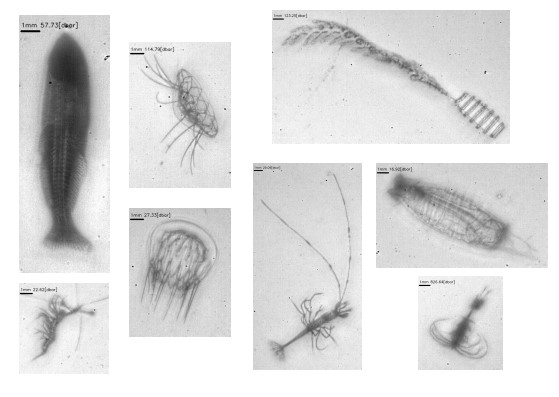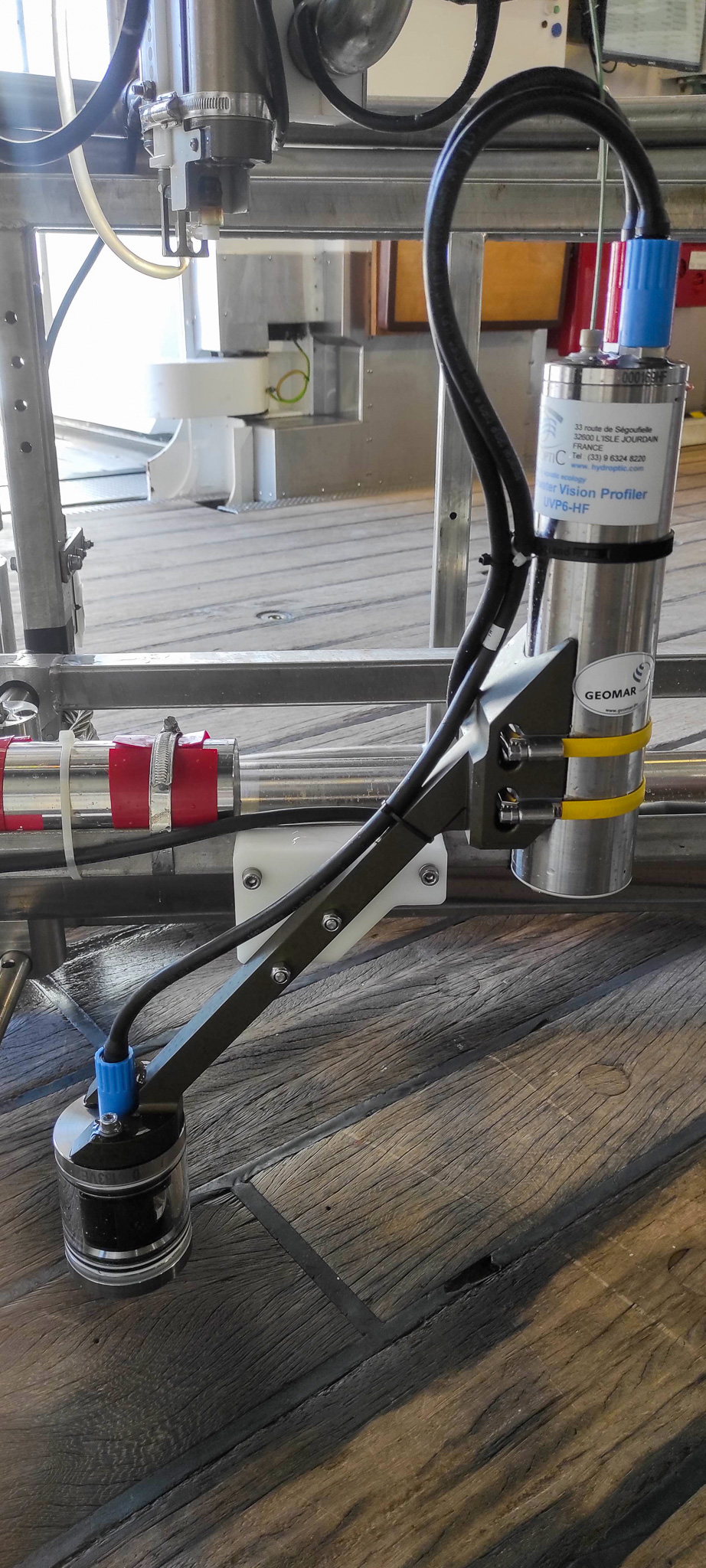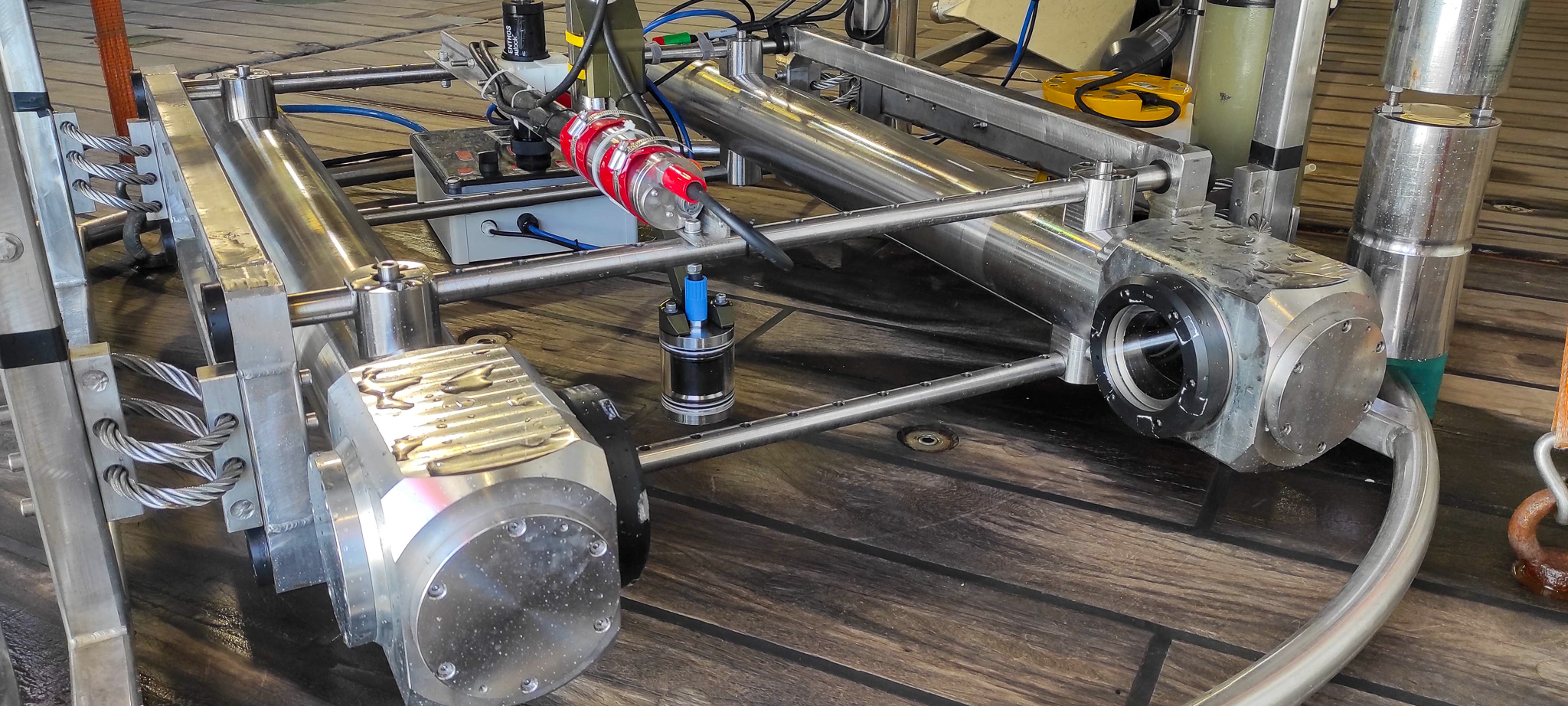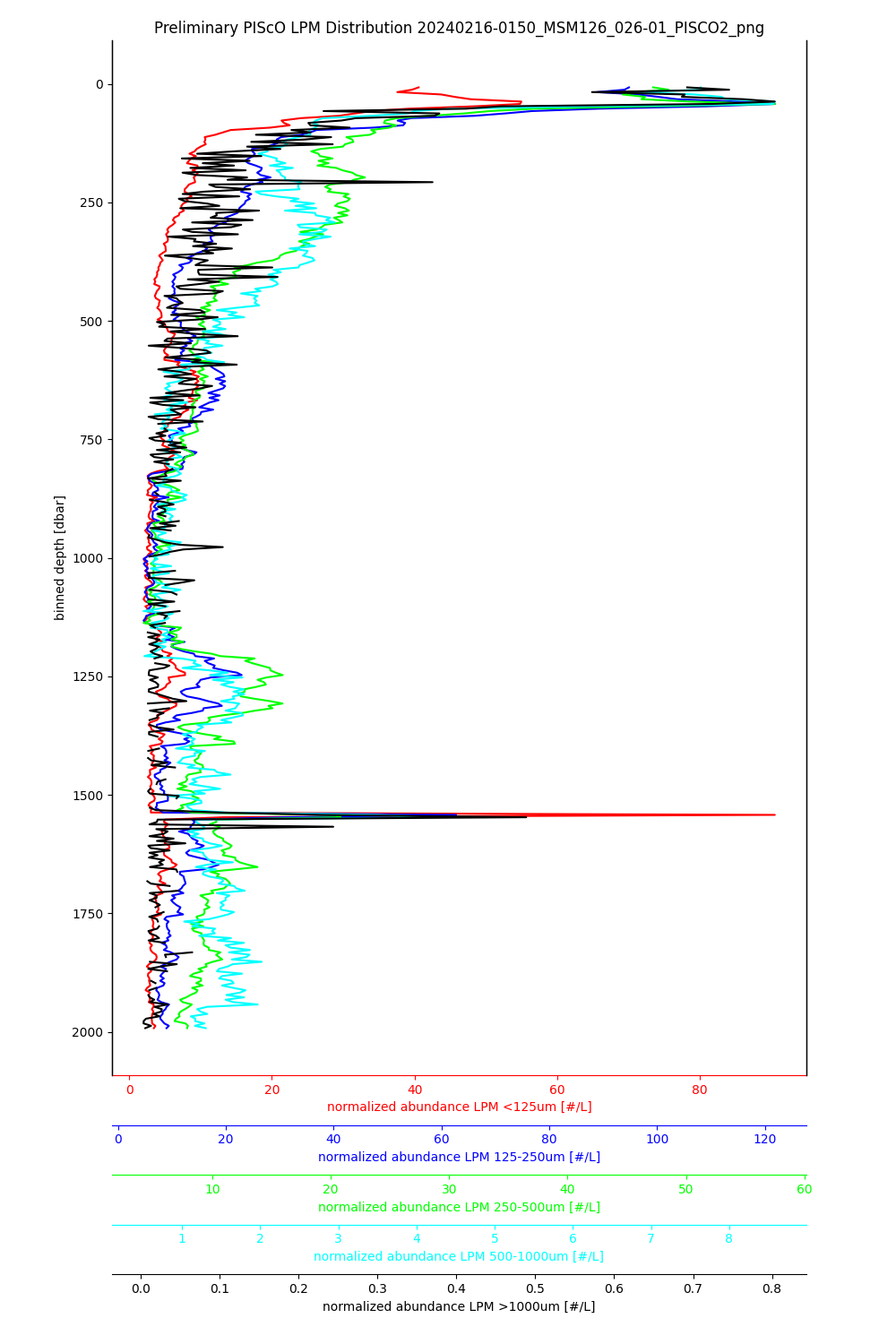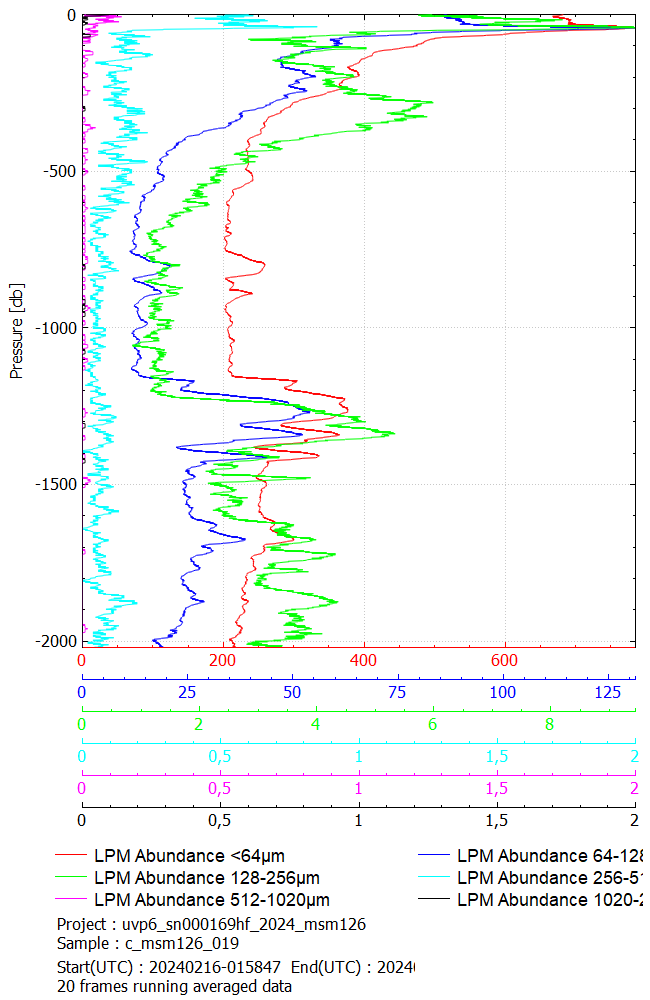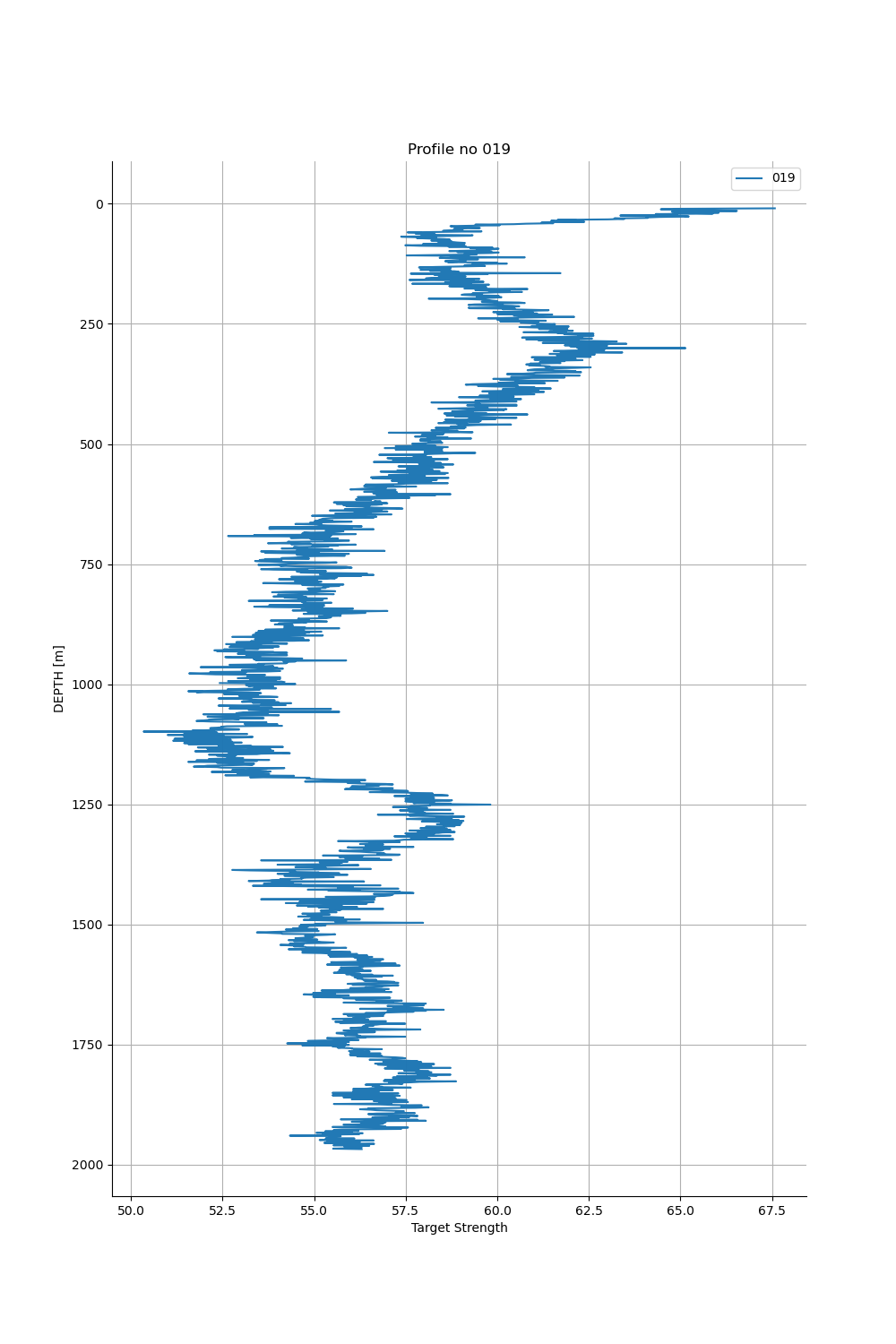It’s ten o’clock in the evening, the research vessel MARIA S. MERIAN is moored off the coast of Madeira. The bridge gives the announcement: “On station in about ten minutes”. And off we go for another night of yo-yo CTD cruising.
As we mentioned in a previous blog post, today we’re diving deep into why CTD profiling is so exciting and why yo-yo profiles in the same position make sense.
Well, we’ve upgraded our water sampler a bit. To be precise, we’ve added two high-resolution camera systems to the mix.
One of these systems is the UVP 6 (Underwater Vision Profiler, Fig. 1), which we operate for Rainer Kiko, head of the Plankton Biogeochemistry and Dynamics group in the Biological Oceanography research unit. The camera has special lighting that generates a light disc, illuminating the focal plane of the camera precisely. This feature enables us to determine the size of the recorded objects accurately.
The second camera system, PIScO (Plankton Imaging with Scanning Optics, Fig. 1) by Jan Taucher, head of the junior research group “Plankton Imaging”, was developed at GEOMAR. The system has a special optical design, with a liquid lens oscillating at 70 kilohertz, enabling a large depth of field range.
Both systems are designed to detect particle size distribution and plankton in the water column. The UVP6 is better suited for particles and smaller zooplankton (approximately 100 µm-5 mm), while the PIScO camera is optimised to detect a broad spectrum of zooplankton (approximately 0.5-100 mm). Therefore, both systems complement each other well for various questions, such as particle fluxes or zooplankton composition.
In addition to the camera systems, a Lowered Acoustic Doppler Current Profiler (LADCP) is also installed on the CTD. This sensor is typically used to measure current velocities by using particles in the water column as acoustic reflectors. Thus, the ADCP provides certain information about particle distribution that can be compared with the optical systems.
But why “Yo-Yo”? The reason for this is the vertical migration of plankton, which rises from the depths to the surface every evening and migrates back to the depths in the morning. The aim of the yo-yo profiles is to identify these ascent phases, which last about four hours, in order to see which plankton species rise when and where. To do this, Marco analyses the ship’s ADCP data, which shows the migratory behaviour (Fig. 3).
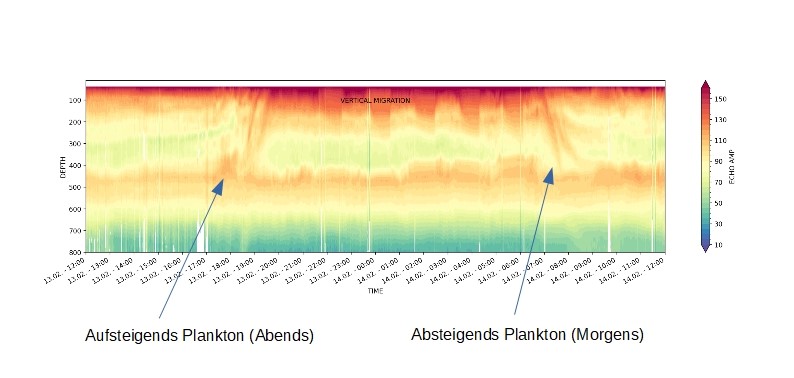
Where’s the excitement in all of this? Of course, with every profile, a rare animal may swim in front of the camera. We are always excited to see what has been detected each time the cameras come up again and the computer analyses the approximately 30,000 images of a 3000-metre profile (see image above).
Greetings from aboard the MARIA S. MERIAN,
Anton Theileis and Marco Schulz
